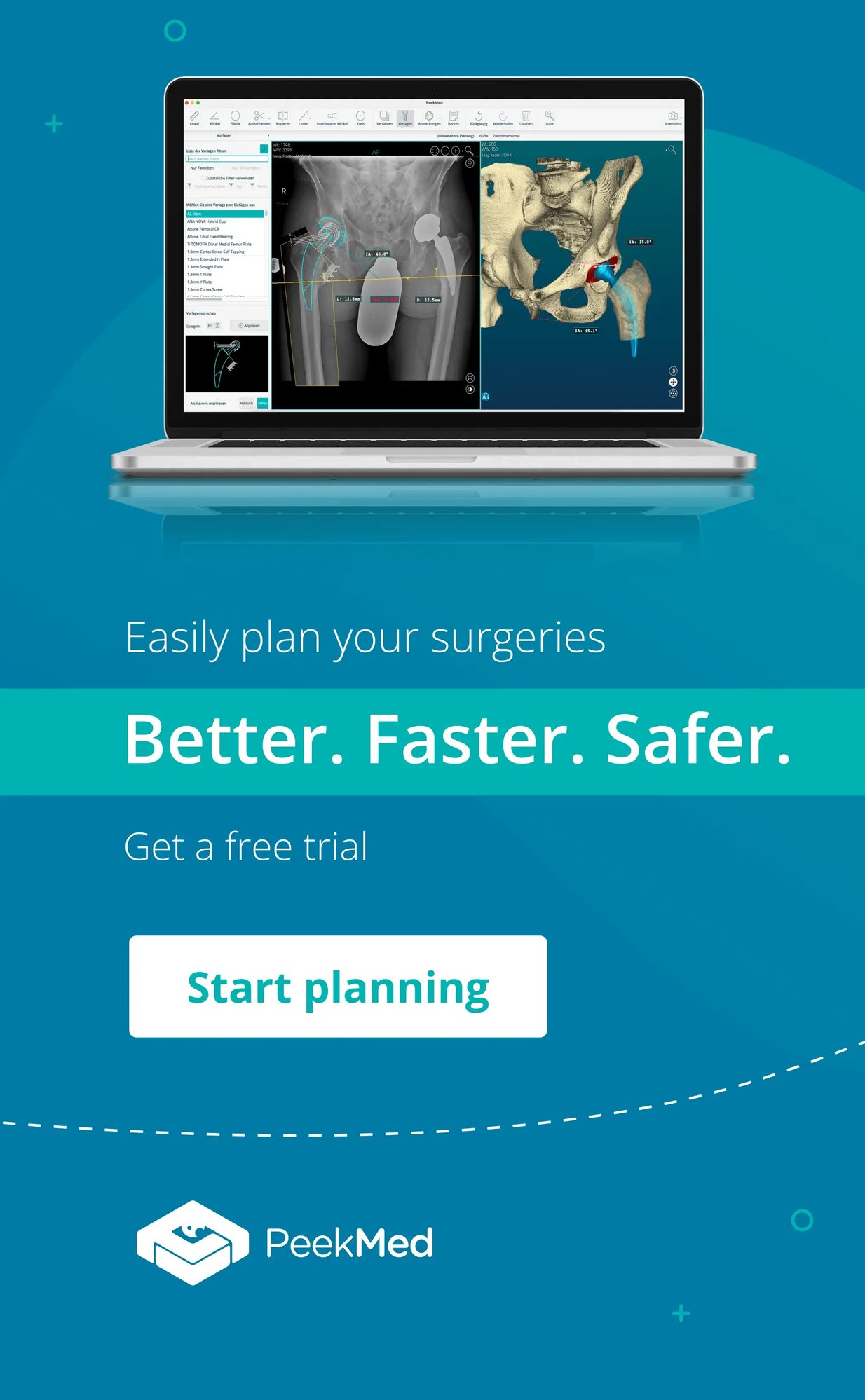PeekMed
Orthopedic surgery is a vast and ever-evolving field dedicated to the complex musculoskeletal system. From intricate joint repairs to delicate spinal procedures, orthopedic surgeons work tirelessly to restore function, alleviate pain, and enhance patient mobility.
This pillar page delves into the core aspects of orthopedic surgery, exploring established practices, emerging trends, and the constant pursuit of improved patient satisfaction.
Personalized (Orthopedic) Surgery: Tailoring Treatment to the Individual
The act of undergoing surgery has always been a unique and personal experience for each patient.
Personalized surgery is a proactive approach to healthcare that focuses on the individual patient. Rather than using a one-size-fits-all method, it considers each patient's unique anatomy, medical history, and other factors to create a tailored treatment plan.
By utilizing digital technology, such as virtual twins, 3D printed implants, and preoperative planning software, orthopedic surgeons can create custom treatment plans and provide proactive patient health management.
Computer-Assisted Surgery: The Pursuit of Precision
Computer-assisted surgery (CAS) is revolutionizing orthopedic practice, leveraging technology, AI, and big data to enhance surgical precision. It offers benefits such as improved visualization, streamlined workflow, and enhanced patient outcomes.
CAS streamlines preoperative planning, allowing for the selection of necessary implants and anticipation of potential challenges.
During surgery, it acts as a real-time navigation system, similar to GPS, utilizing images captured by LED cameras, thereby enhancing accuracy and reducing intraoperative complications.
Postoperatively, CAS facilitates comprehensive patient follow-up, providing surgeons with valuable insights into recovery processes.
Robotic Surgery: The Surgeon's Partner, Not Replacement
Robotic-assisted orthopedic surgery utilizes minimal tools attached to a robotic arm, which is controlled through a computer interface. This advanced method enables surgeons to navigate surgery with heightened precision and dexterity, mitigating the limitations of human tremors, which facilitates complex surgical maneuvers with minimal invasiveness.
From partial knee replacements to spine surgeries, robotic-assisted techniques can access anatomical regions that may be challenging to reach with traditional hand or laparoscopic techniques.
It also helps in implant placement, and tissue preservation, which ultimately optimizes patient outcomes and satisfaction.
3D in Surgery: Leveraging Imaging and Printing Technologies
3D imaging and printing technologies are revolutionizing the practice of orthopedic surgery, providing surgeons with invaluable tools for preoperative planning, intraoperative navigation, and custom implant fabrication.
By visualizing anatomical structures in 3D, orthopedic surgeons can generate 3D models, optimize implant sizing and positioning, and simulate complex procedures that help to anticipate surgical challenges.
Additionally, 3D printing enables the creation of patient-specific implants, prostheses, and surgical guides tailored to individual anatomies which improve surgical outcomes.
Minimizing Wrong-Site Surgery: Safeguarding Patient Safety
Wrong-site surgery is a critical concern with potentially devastating consequences for patients and practitioners alike. According to a study1, orthopedics is the service most frequently responsible for wrong-site surgery claims with 35.3%.
Simple strategies are implemented before procedures – reducing drastically clinical, logistical, and medical errors - such as:
-
Pre-Procedure Verifications: Ensure all necessary information and materials are available before entering the operating room.
-
Surgical Checklist: Implement a surgical safety checklist, like the World Health Organization (WHO) checklist or the Joint Commission Universal Protocol Surgical Checklist, to identify preoperative tasks.
-
Site Marking: Mark the surgical site to prevent errors, especially in cases with multiple possible sites.
-
Surgical Time-out: Conduct a final check before surgery to confirm patient identity, correct surgical site, and procedure.
-
Patient Engagement: Communicate with the patient to verify personal details and the planned procedure.
Additionally, ongoing advancements in various technologies within orthopedic surgery contribute to reducing errors and enhancing patient safety during procedures.
The Future of Orthopedic Surgery: Innovations on the Horizon
Looking forward, it is apparent that orthopedic surgery will continue to advance alongside technology. The aforementioned technologies are set to evolve further through research and development, resulting in better surgical techniques and personalized treatments.
Regenerative medicine, including therapies like stem cell treatment and platelet-rich plasma, also offers exciting possibilities for tissue repair and regeneration in orthopedics. These approaches hold promise for enhancing healing, restoring function, and reducing pain in patients with musculoskeletal disorders.
Finally, augmented reality and virtual reality technologies are also poised to play a key role in orthopedic surgery. These tools enable surgeons to visualize complex anatomy, plan surgeries, and educate patients in immersive digital environments.
In summary, the future of orthopedic surgery promises to be defined by innovation, precision and enhanced patient well-being.
Reference:
1 - Tan, J., Ross, J. M., Wright, D., Pimentel, M. P. T., & Urman, R. D. (2023). A contemporary analysis of closed claims related to wrong-site surgery. The Joint Commission Journal on Quality and Patient Safety, 49(5), 265-273.



